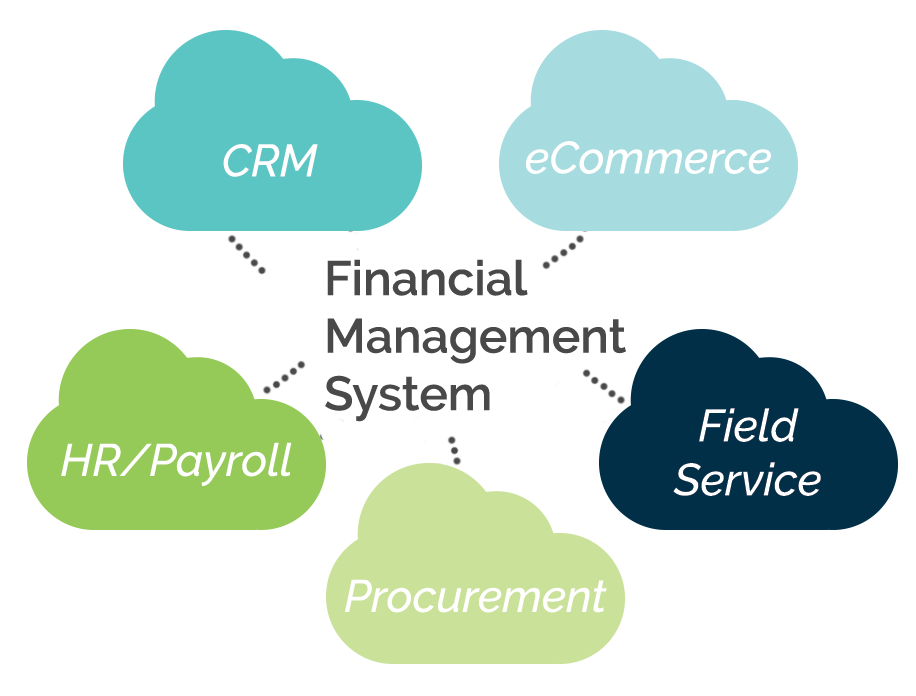Effective May 21, 2023, P&N has joined EisnerAmper. Read the full announcement here.

Agility has become increasingly important in today’s business environment. The ability to pivot with rapidly-changing conditions—such as economic influences, customer needs, workplace requirements, and advances in technology—empowers organizations to sustain operations when faced with uncertainty and a competitive advantage when faced with opportunity.
Cloud computing is an unsung hero of business agility. Cloud provides the infrastructure and flexibility to support the way your organization wants and needs to operate. With the cloud, organizations are able to recognize many benefits, from lower technology costs and accessible risk mitigation measures, to anytime and anywhere access. These advantages are strengthened when organizations decide to move away from a rigid, suite software approach to an agile, best-in-class approach.
Best-in-class software is well-known for its in-depth functionality and ability to integrate with other software.
Best-in-class software is designed to focus on and excel within a single functional area of business. It does this by offering features specific to the functional area it serves, such as the financial management team. In contrast, suite software endeavors to fulfill the needs of a broad range of functional areas, such as accounting, human resources, and payroll. With a suite offering, the array of software products may differ in quality, usefulness, and long-term return on investment.
Best-in-class software is well-known for its in-depth functionality and ability to integrate with other software. With a focus on serving one area of a business, best-in-class software can offer more robust capabilities and features to address the needs of that area. It is also designed to connect with systems that serve other areas of the business, helping to provide a unified experience comprised of more than one market-leading solution.
Organizations that choose a best-in-class cloud software approach are able to leverage the inherent benefits of the cloud. In connecting multiple best-in-class applications, you can make the most of software decisions by allowing each functional area or department to choose the system that is right for them. When implemented and integrated properly, the end product delivers new levels of automation, visibility and collaboration instead of isolated, manual processes forced through clunky and antiquated interfaces. Best of all, best-in-class systems won’t tie your organization down to a one-size-fits-all tool!
Best-in-class cloud financial management
Given these advantages, it’s not surprising to see a growing number of finance professionals opting for best-in-class cloud solutions to meet the escalating business and technology needs of their team. When it comes to selecting the right cloud financial management software, it is important to evaluate how the software will help to better position your organization now and into the future. With finance under increasing pressure serve the business strategically and operationally, the following questions should be asked when selecting a best-in-class cloud financial management system:
- Can internal and external stakeholders gain access to real-time data?
- Does the solution provide flexible reporting and role-based dashboards?
- Can processes be automated, controlled, and streamlined through user defined workflows?
- Does the solution provide scalability for an evolving business?
With a best-in-class approach, the right financial management system can become the hub of an organization with other products comprising the spokes, each one addressing specific functional areas, such as Customer Relationship Management (CRM), human resources, and payroll. Best-in-class cloud financial management systems open the door to building a unified accounting and operations ecosystem that effectively supports an organization as it pivots in response to ever changing business conditions.

Selecting the right finance tech stack
So, how do you go about selecting the systems that are right for your organization? This process is often called building a tech stack. When building a finance tech stack, there are a lot of options to choose from. With an investment of time and money, and the organization’s ability to pivot and scale on the line, you can’t afford to make uninformed decisions.
Start with documenting your business requirements and evaluating all options against them to gain an understanding of which solutions will best address your needs. Next, take the software options you believe will work best and map them out so you know how data will flow between the systems. Finally, put together a timeline that shows your goals for when each solution should be implemented and what resources will be needed at different points along the way. Consider the timing of quick-win projects that will drive immediate benefits and motivate the team to continue moving forward.
Working integrations are key to creating a seamless flow of data between the various best-in-class systems you have selected for your tech stack. An integrated finance tech stack can reduce the costs and risks associated with manually rekeying data from one system to another. It also enables you to relay real-time information about your business through tools such as dashboards and reports.
When the software selection question is shifted from “Which solution can do it all?” to “Which solution will work best for each team?” an organization can truly capitalize on an end product that provides an enhanced experience, agility, and longevity.”
P&N has over 15 years of experience helping clients implement accounting and ERP software solutions. Contact us to start a conversation about how your organization could increase agility by implementing a best-in-class tech stack.




